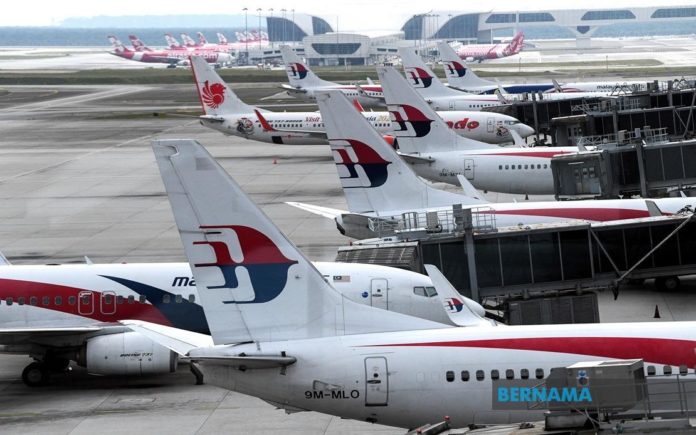Kuala Lumpur, 20 April 2020 – Aviation is among the sectors hardest hit by the COVID-19 pandemic, possibly driving many airlines into technical bankruptcy.
For Malaysia’s major airlines, experts say a rescue plan is a must but merger is an unlikely option.
Shukor Yusof, head of aviation consultancy Endau Analytics, said a merger between Malaysia Airlines Bhd (MAB) and AirAsia Group would harm Malaysian consumers by creating a monopoly on many routes where both airlines are currently competing aggressively.
At present, AirAsia controls 50 per cent of the market while MAB, which is wholly owned by sovereign wealth fund Khazanah Nasional Bhd, has about 30 per cent.
The merged entity would have roughly 80 per cent of the market share, giving it way too much dominance in the market and enabling it to dictate pricing, he said.
Hence, such exercise would reduce choice for the people as well as likely resulting in higher fares, he told Bernama when asked on International Trade and Industry Minister Datuk Seri Mohamed Azmin Ali’s remark recently that merging MAB with budget airline AirAsia was one of the options to “save” them as the COVID-19 crisis battered the industry.
The senior minister was reported as saying deliberations would soon take place on various options to help out the country’s airline industry.
For the record, the call for merger between MAB and AirAsia is not new; it has been deliberated in the past but without a conclusive decision.
“There is little synergy to be gained from a merger of the two, as they have vastly different business models and corporate cultures,” Shukor explained.
In all, he opined, a merger between the carriers was not entirely for the government and owners of AirAsia to decide among themselves.
“There are 13,000 employees at MAB and each voice must be heard. (They should) have a referendum within MAB to gauge interest on a merger; then only can they take the next step,” he said.
The only positive thing from a merger would be how both airlines could pool their resources, said another expert.
“They can mobilise route networks more efficiently, while (putting less pressure on) the government’s coffers as it does not have to bail them out that much,” said the source, who requested anonymity.
Nevertheless, he believed the ensuing move to cut down on redundancy might force at least 40 per cent of the existing workforce to be out of a job, adding to the unemployment number which is already estimated at 2.6 million post-COVID-19.
Segment-wise, he said AirAsia was a fully commercial airline that generated money on its own decision whereby it had the liberty to fly anywhere and to pull out anytime it wished.
As for MAB, the national carrier operates in a premium segment and its operational decisions are dictated by the government.
Hence, he echoed Shukor’s opinion that a merger between MAB and AirAsia is not the best option but is a last resort if everything else fails.
“Besides, it has to go through the Malaysian Aviation Commission’s (MAVCOM) evaluation and decision. MAVCOM is an independent economic regulator of the aviation industry and its existence shall be respected as it was set up by the government,” he said, adding that the commission had the capacity to determine the feasibility of the merger as per Section 54 of the Malaysian Aviation Commission Act and the competition guidelines.
The International Air Transport Association (IATA) estimated the impact of the COVID-19 outbreak on the aviation industry would be “severe” with second-quarter (Q2) revenues possibly falling by up to 68 per cent.
It said a devastating net loss of US$39 billion would be recorded in the quarter and many airlines could possibly go bankrupt in the near term without government aid.
For the year as a whole, IATA is projecting US$314 billion in passenger revenue loss, down a “catastrophic” 55 percent from the 2019 revenue figure.
-BERNAMA
